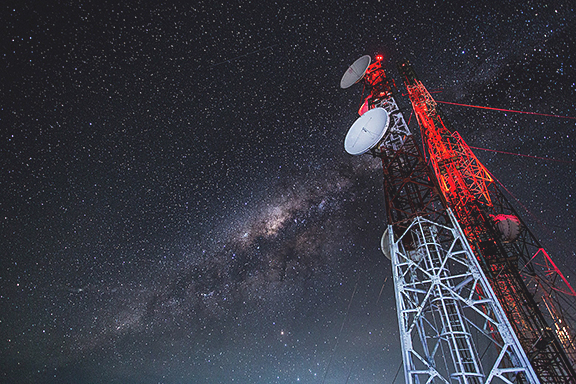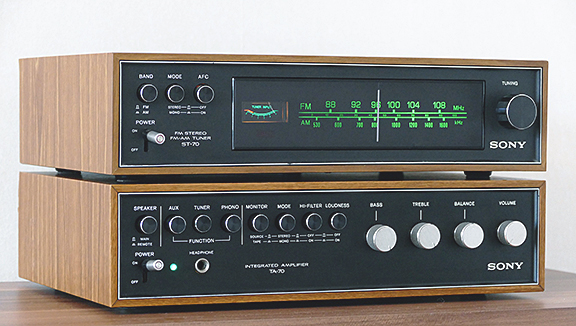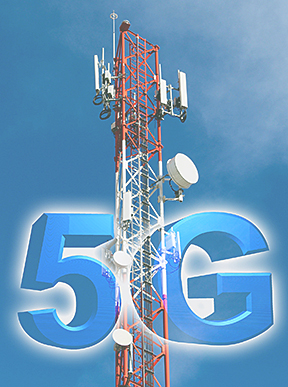What’s in a “G”?
Let’s take a little walk in radio history, shall we?
How long ago did we start taking advantage of radio waves? According to the always-useful Wikipedia: “Radio waves were first predicted by mathematical work done in 1867 by Scottish mathematical physicist, James Clerk Maxwell. His… Maxwell’s equations predicted that a coupled electric and magnetic field could travel through space as an ‘electromagnetic wave.’ Maxwell proposed that light consisted of electromagnetic waves of very short wavelength. In 1887, German physicist Heinrich Hertz demonstrated the reality of Maxwell’s electromagnetic waves by experimentally generating radio waves in his laboratory, showing they exhibited the same wave properties as light: standing waves, refraction, diffraction, and polarization. Italian inventor, Guglielmo Marconi developed the first practical radio transmitters and receivers around 1894-1895. Radio communication began to be used commercially by around 1900. The modern term ‘radio wave’ replaced the original name ‘Hertzian wave’ around 1912.”
For a radio “signal” to be useful to us humans, a radio wave must be produced (by accelerating charged particles using an electronic device called a radio transmitter), which applies oscillating electric currect to an antenna, generating radio waves. These waves are picked up by another antenna attached to a radio receiver as the radio waves push the electrons in the metal of the antenna back and forth, creating tiny oscillating currents which are detected by the receiver.
On Christmas Eve, 1906, a man named Reginald Fessenden, in the first-ever noted radio broadcast, sent his program from Ocean Bluff-Brant Rock, MA out, where it was picked up by ships at sea. His program consisted of himself playing “Oh Holy Night” on violin, and reading from the Bible. AM radio at it’s finest.
Then in 1920, Detroit, Michigan was home to the first radio news program on station 8MK – still in operation today as all-news station WWJ. AM radio was used by aircraft for navigation during the early part of the 1900s until it was replaced with VOR (Very high frequency omni-directional radio) in the 60’s. And AM (amplitude modulation) was the way radio was received until March 1, 1941, when W47NV went “on the air” in Nashville Tennesee, with the United States’ first FM (frequency modulation) radio station. Just in time for Rock ‘n’ Roll.
Though video signal – television – was possible as early as the 1920s, commercial television didn’t begin transmission until the 1940s in Europe and North America. Each of these developments was very significant in it’s time, but the biggest “thing” to come along in the latter part of the 20th century was certainly the cell phone.
Believe it or not, it was in 1947 that AT&T offered “Mobile Telephone Service,” beginning in St. Louis and spreading slowly to select towns and along highways. Given that only 3 customers in one location could be making a call at any given time, mobile telephone didn’t really take off until cell phones were introduced in the late 70s – remaining the primary mobile phone experience through the early 2000s.
And in 2007, Apple introduced the iPhone – and just as Nikola Tesla had predicted in late 1926: “When wireless is perfectly applied the whole earth will be converted into a huge brain, which in fact it is, all things being particles of a real and rhythmic whole. We shall be able to communicate with one another instantly, irrespective of distance. Not only this, but through television and telephony we shall see and hear one another as perfectly as though we were face to face, despite intervening distances of thousands of miles; and the instruments through which we shall be able to do this will be amazingly simple compared with our present telephone. A man will be able to carry one in his vest pocket.”
Tesla was accurately describing not just the smartphone, but the Internet of Things (IoT), which is the connection that is now possible from one thing to another without any human intervention at the time of contact. A device can “know” when it needs service or it’s time to perform a chore and signal another device that it needs power, or a door to open. And all of this can happen wirelessly – which brings us around to “What’s a G,” or more appropriately these days, what’s 5G?

We have to back up to what’s a “cell? ”A cell is simply a communication network area, served by at least one fixed location transceiver. This station allows coverage for voice, data, and other content that can be delivered by radio waves. Joined together, cells can enable communication for mobile phones, tablets and laptops equipment with mobile broadband modems.
Knowing that, you can understand that 5G is simply the fifth generation in technology standards for broadband cellular networks – connections between cells – that cell phone companies began using in 2019. It’s ultimately planned to be the replacement for 4G (which most cell phones use today).
1G, or the first generation in broadband cellular networks, was analog technology, and was voice only. The maximum speed – 2.4 Kbps (or Kilobytes per second); also known as very slow.
2G added both call and text encryption, along with SMS, picture messages, and MMS. Maximum speed was now a lightning fast 384 Kbps.
3G meant faster data-transmission speeds, and cell phones could now be used for video calls and mobile internet access. Maximum speed 2 Mbps (Megabytes per second) when stationary, and 384 Kbps in a moving vehicle.
And that brings us to today, with 4G, the fourth generation, introduced in 2008. Keep in mind that between 1 and 2 G there were stops along the techway such as 1.25 and 1.5 as technology kept improving. It was with the full number stops that a generation of change was noted. At 4G, mobile web access, gaming, HD mobile TV, video conferencing, 3D TV, and a host of other high speed options are available. The maximum speed in motion is 100 Mbps, and stationary or at slow speeds in motion, 1 Gbps (Gigabytes per second).
The advantage to 5G? Greater bandwidth, enabling faster download speeds up to as much as 10 gigabits per second. This higher bandwidth will enable communications not just among cell phones, but serving as competition for cable, as well as improving the IoT.
The disadvantage? Be prepared: your 4G cellphone won’t work with the newer, faster networks. Maybe Tesla knew that, too.











